Call routing
If you get lots of inbound calls, then you need a phone system that makes call routing simple and efficient. Luckily, Dialpad's AI-powered collaboration platform does precisely that—and a lot more! Signup takes just a few minutes, and you'll be set up with a virtual phone number too.

What is automated call routing?
So, what is call routing? In essence it’s the funneling of incoming calls to the correct people or departments. Automatic call routing, by extension, is a call management feature (commonly found in telephony and contact center software) that automatically distributes incoming calls according to criteria that you’ve set based on your contact center's or team's capacity.
The benefits of automated intelligent call routing are huge—especially if you run a small business or are understaffed or under-resourced. Traditionally, businesses needed to hire a person just to direct calls to the right team members or departments. That was their entire job.
Not anymore. Now, a good communications platform or phone system can automatically route calls for you, allowing you to provide an excellent customer experience with low call wait times—while making sure callers get to the most skilled agents for their particular questions.
Different types of call routing rules
How does call routing work in practice? That’s largely up to you. You can choose the call routing rules which you wish to apply to your inbound calls. The following four are some of the most common:
Fixed order
Fixed order call routing—also sometimes known as sequential routing—is one of the simplest types of call routing rules. It involves directing calls to recipients in a fixed, sequential order.
Let’s look at a simple call routing example that applies this rule:
Your business has five agents for answering calls. You number them from one to five.
With fixed order call routing, when a call comes in, it gets routed to agent number one.
If another call comes in while agent number one is busy, it then gets routed to agent number two.
Agent three will only receive a call if both agents one and two are busy, and so on.
Round robin
Round robin call routing is a rule which aims to distribute calls more evenly amongst your agents.
Assuming the same set of five agents from our earlier example, this is how round robin routing would work:
The first call to your business gets routed to agent number one.
The second call is routed to agent number two, regardless of whether agent number one is available or not.
The third call goes to agent number three, and so on, until the sixth call which would go to agent number one again.
By idle time
This is a more complex type of call routing rule, which takes into account how active each agent has been on a given day or shift. When a call comes in, your system will automatically route it to whichever of your agents has been idle (meaning, not on a call) for the longest.
The idea behind call routing by idle time is to prevent certain agents from being overburdened by calls and to combat call avoidance by others. It helps in adherence to the twin call routing best practices of prioritizing customer experience and considering agent engagement.
Skills-based
Skills-based routing is made possible by a smart cloud phone system or call center software. A caller provides information via the solution’s IVR menu about the nature of their query or call.
The system will already have been furnished with information about each agent’s knowledge level and skillsets. It then matches the most appropriate agent to the call, according to the information the caller provides.
Benefits of an effective call routing service
An efficient call routing system is a necessity for any business that receives a high volume of inbound calls. Being able to handle and manage those calls effectively is good for your customers, your staff, and your bottom line.
For customers
When a customer reaches out to a business over the phone, they typically have similar expectations. They expect to get through to you (at least, reasonably) quickly and they expect you to be able to answer their question or solve their problem.
The best call routing software—when properly set up—can help on both counts. By establishing sensible call routing rules, you can ensure that calls to your business are connected to agents as quickly as possible.
What’s more, if you implement smarter call routing services—like skills-based routing—each caller is more likely to speak to someone who can solve their issue straight away. That makes for happier customers.
For agents or staff members
Without automated call routing, the jobs of your agents or customer support representatives will be harder.
Firstly, someone will have to take charge of manually routing calls to the right people, which is a time-consuming task. It’s also not a task that makes best use of an individual’s problem-solving abilities.
Beyond that, without automated call routing solutions, waiting times for customers will—by necessity—be longer. That’s liable to lead to unhappier callers for agents to deal with.
Those unhappy callers who have already waited a long time to speak to someone will also likely have little remaining patience. They probably won’t respond well to being placed back on hold or transferred to another agent. Unfortunately, both of those scenarios are made more likely if they’ve been inefficiently routed.
For the wider business
In and of themselves, happier customers and more content agents are both a positive thing for any business. However, the benefits of call routing extend to other elements of the wider business, too.
Most notably, effective call routing can help to lower a business’s operational costs. It makes it easier for the business to handle higher call volumes, without the expense of having to hire additional staff.
What’s more, the balanced workloads and more patient callers that effective call routing can deliver may have another knock-on benefit. When agents’ day-to-day work is made more comfortable, staff turnover is likely to be lower. Hiring and onboarding costs, therefore, may fall.
Call routing with Dialpad
Sign up with Dialpad to get a robust AI-powered collaboration platform that comes with call routing, unlimited calling (within your country, the US, and Canada), call tracking, video meetings, and more—all in one app. (Or, if you run a contact center, get a demo to see how call routing could work for you.)
Easy setup
From making changes to your call routing rules, to porting numbers or buying toll-free numbers, you can do it all in Dialpad through your online account.

Different types of call routing
With Dialpad, you can route to the agent who's been idle the longest, or according to a fixed order, or based on skill level—just to name a few options. You can even route to voicemail or other departments, and specify how long you want calls to ring for before defaulting to the call queue!
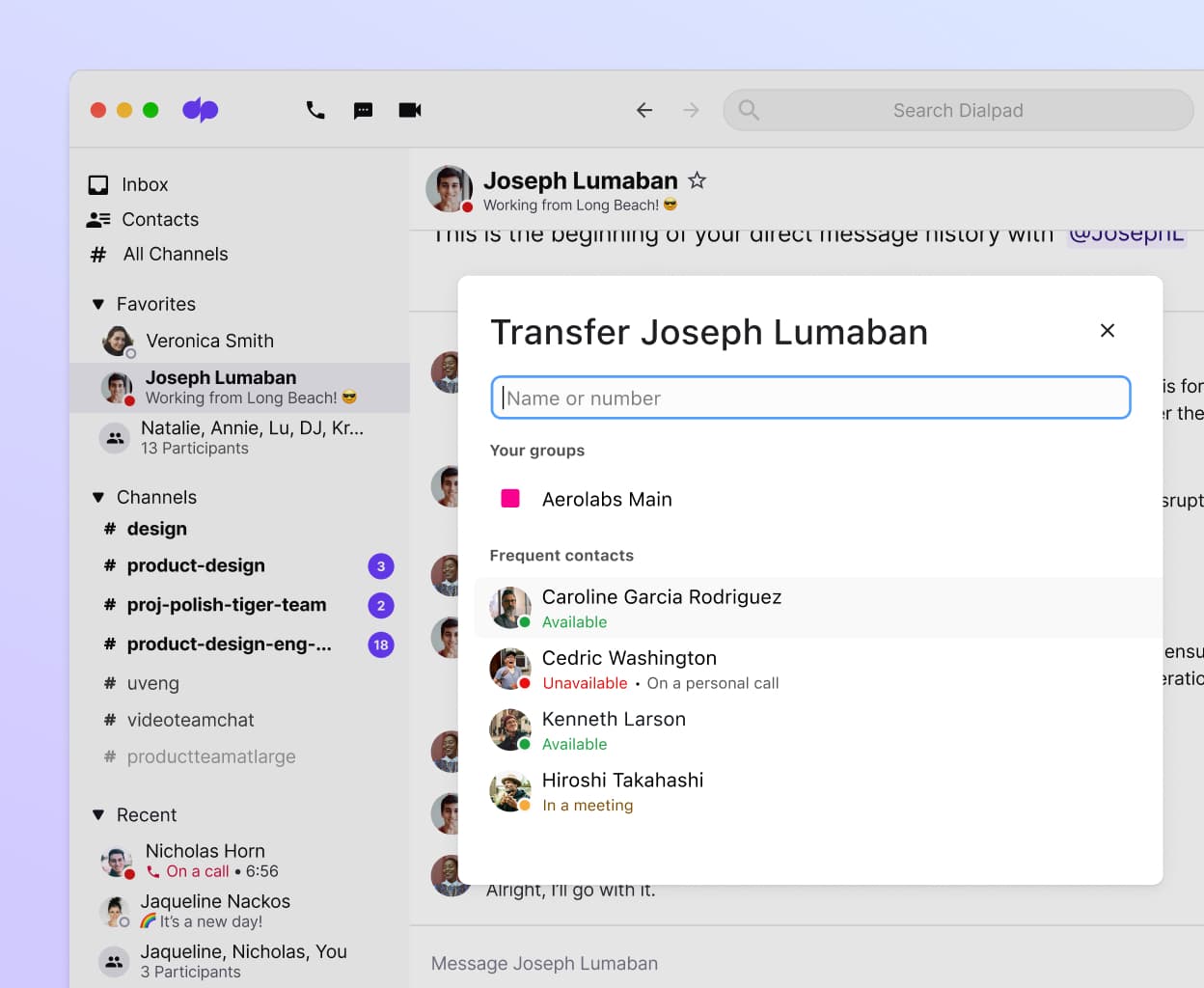
Custom greetings
Upload or record a custom greeting to let callers know how they can route themselves to the right department. You can even upload custom voicemail greetings—all in your online account.
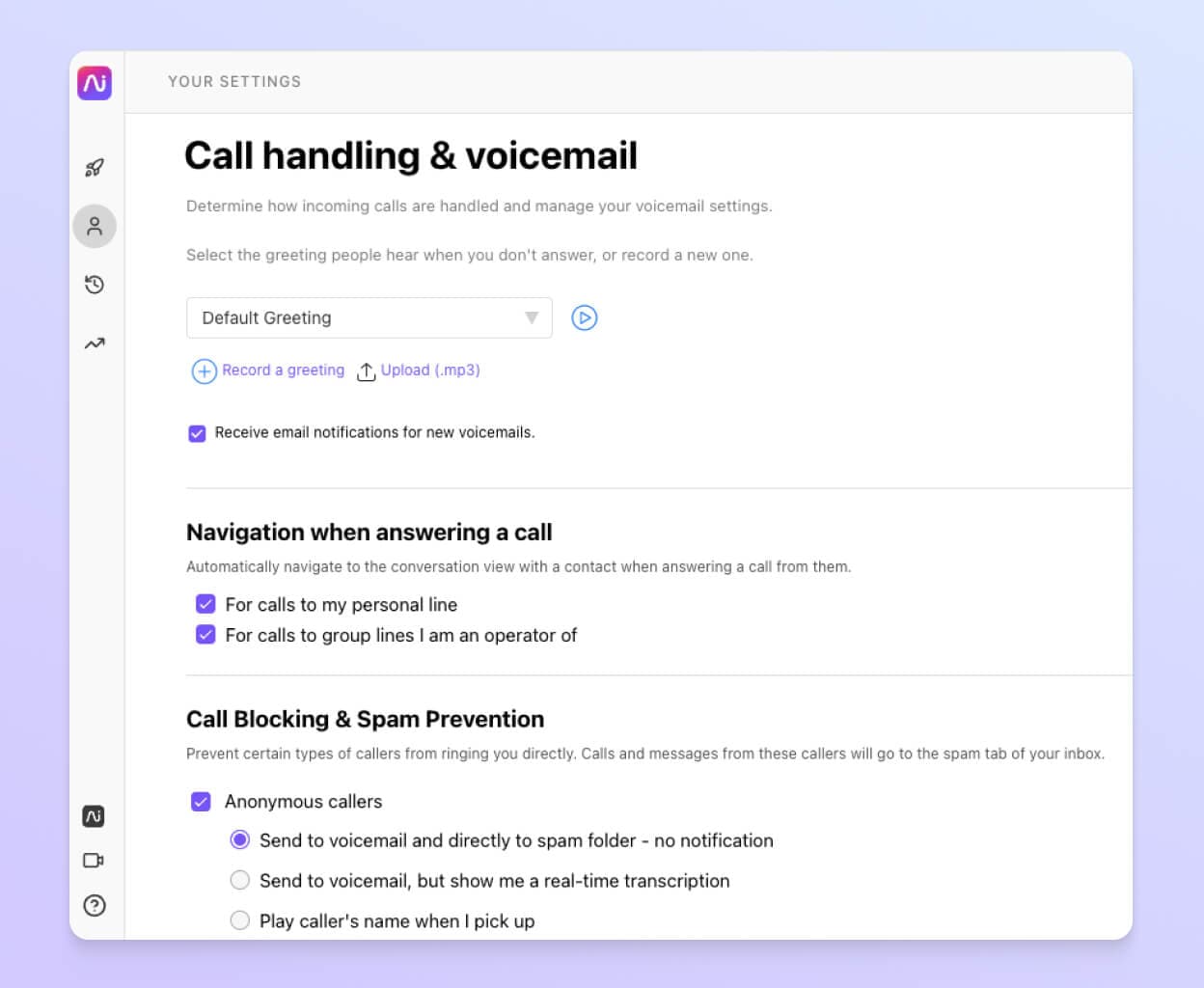
Fallback options
Any calls that go unanswered will be routed to your fallback option—you can set that to go directly to voicemail, to another department, or to an automated response menu.
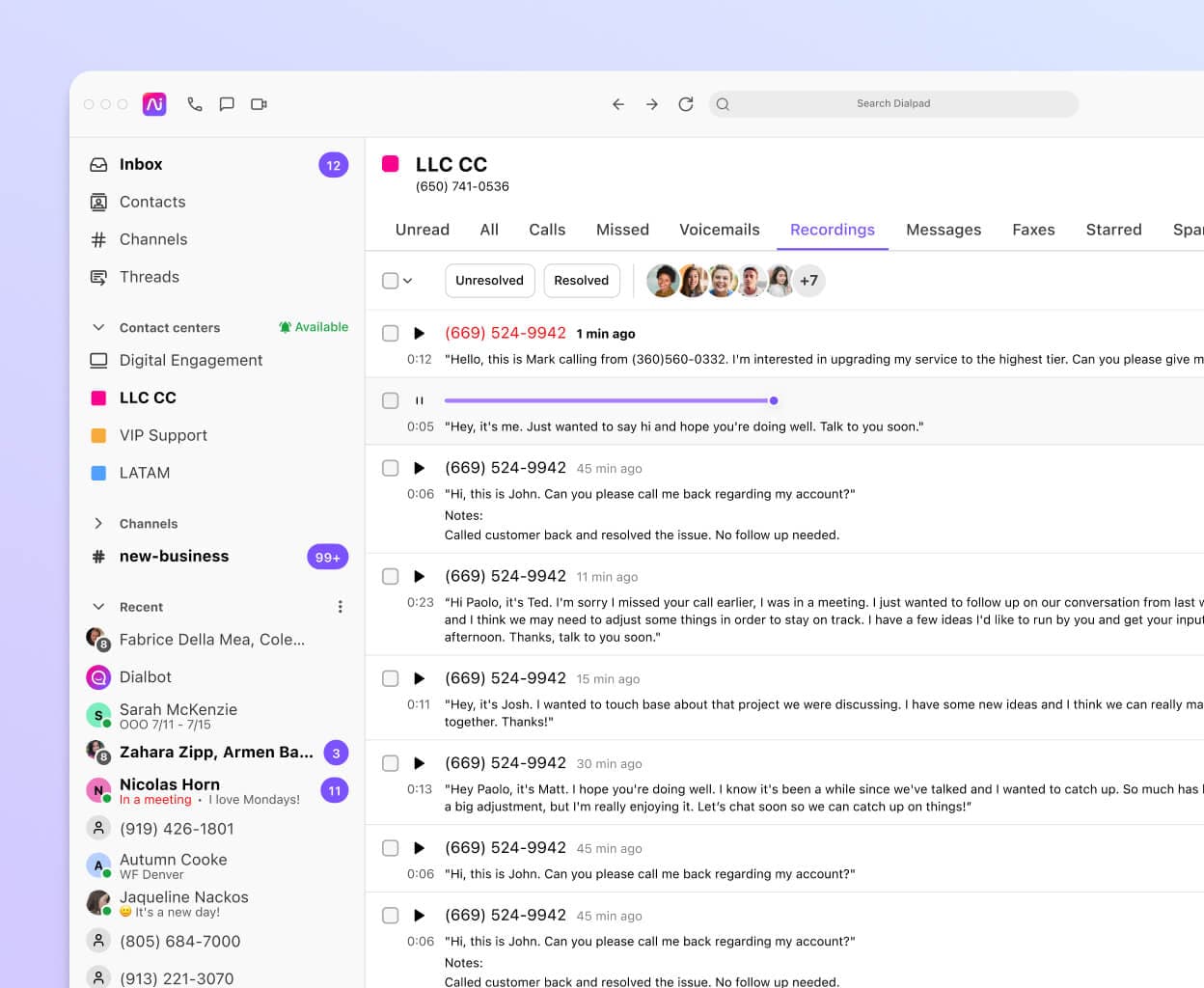
Call routing rules by department
Set call routing rules for different departments. Once you’ve set your business hours for each department, you can tailor the call routing rules to how their agents are set up. For example, you may want to do direct routing for customers calling about basic renewals, but choose skill-based routing for customers calling about trickier things like canceling their service or refunds.
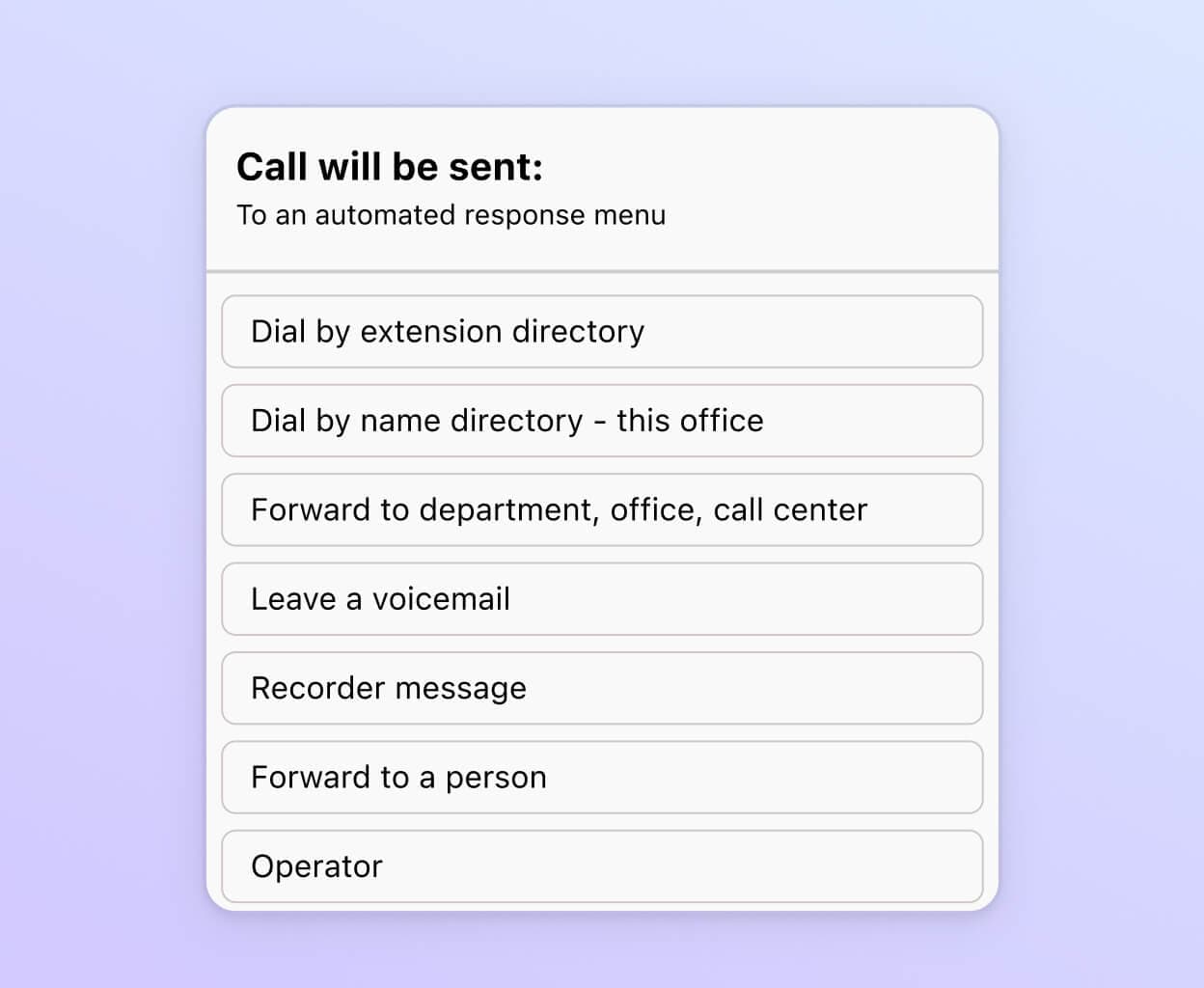
Built-in analytics
Understand how your contact center is performing with analytics that show call volume patterns, average speed to answer, missed calls, call duration, and more. Dialpad even lets you track which IVR (Interactive Voice Response) options are being used most frequently so that you can continuously refine your IVR menu.

Multilingual greetings
If you've got customers with different language preferences, then you'll need a call routing system that supports that. Dialpad's IVR menu languages span English, Spanish, French, Japanese, German, and more.
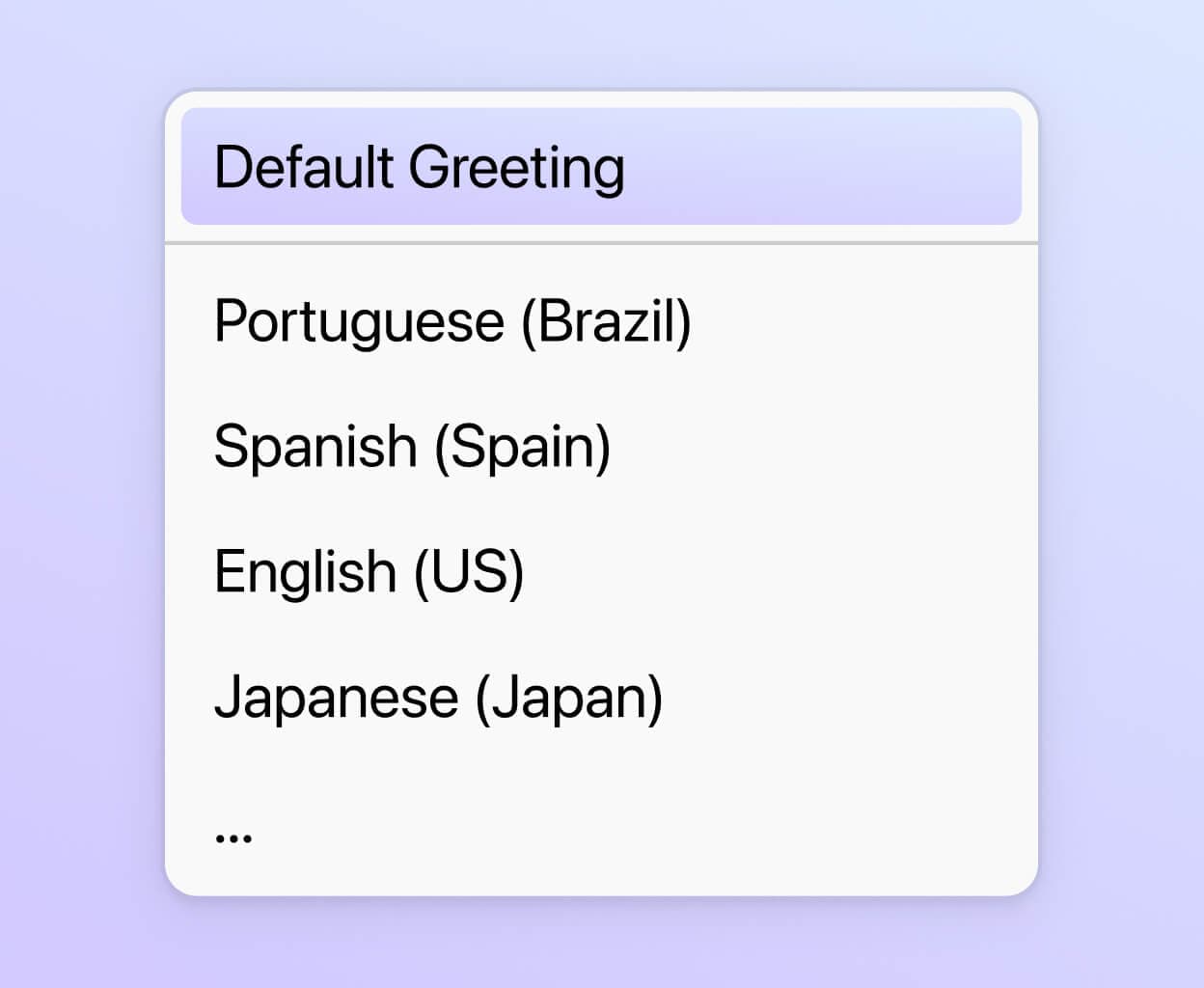
Want to try a call routing system?
Sign up for a free 14-day trial to get set up with a virtual business phone number and try Dialpad's call routing for yourself!
Integrations with your favorite tools
Dialpad integrates with CRMs like Salesforce and HubSpot to automatically log activities and calls, and lets you embed a CTI dialer right inside these tools too.
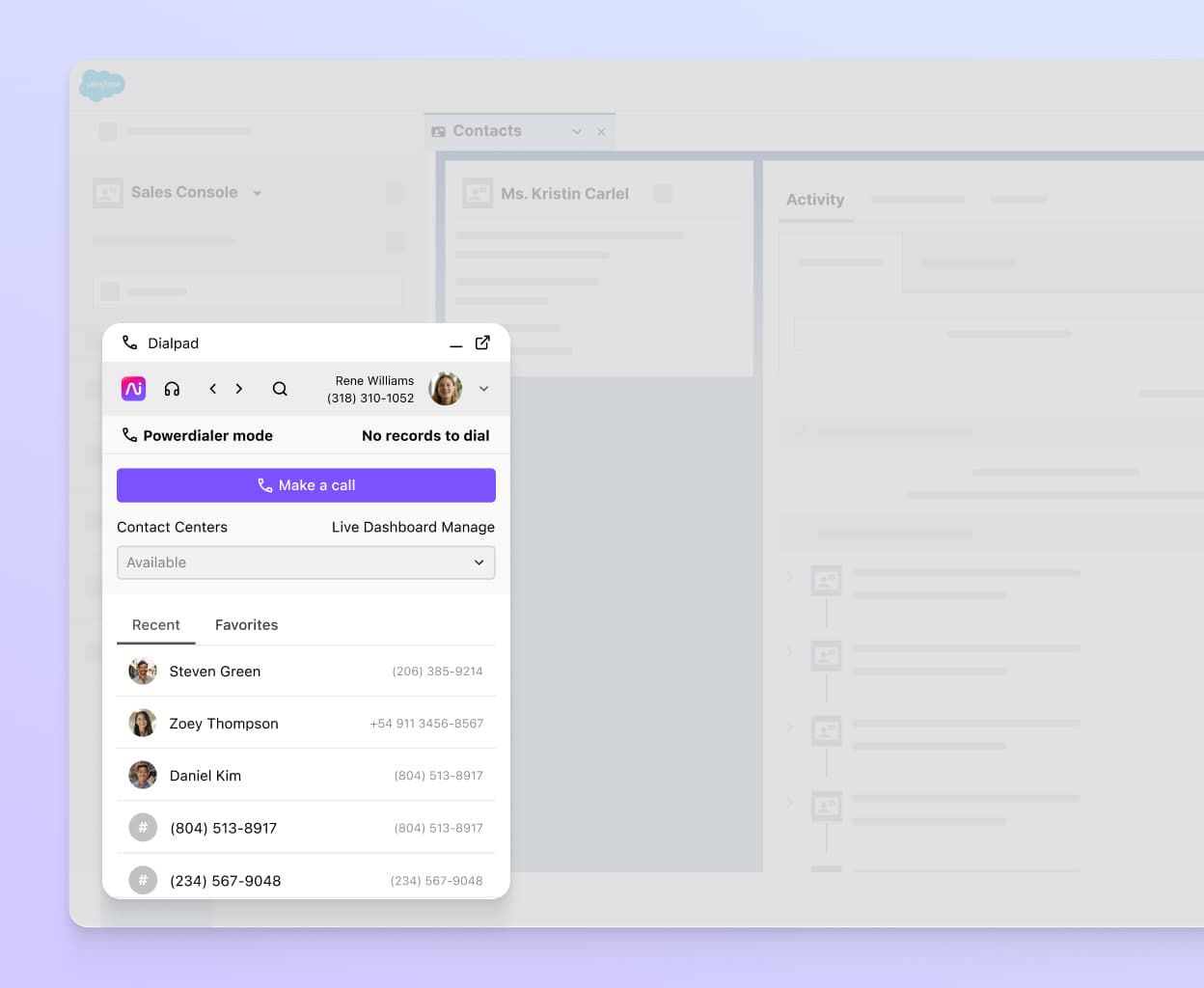
In-queue callback
A very important call management feature to have, in-queue callbacks are important for the customer experience because it gives your callers the option of hanging up and getting a call later. Hey, not everyone can wait around on hold all day.

Day-and-night coverage
Have customers and callers in different time zones? Dialpad's call routing features make sure to route calls to an available person in real time—no matter what time of day it is.
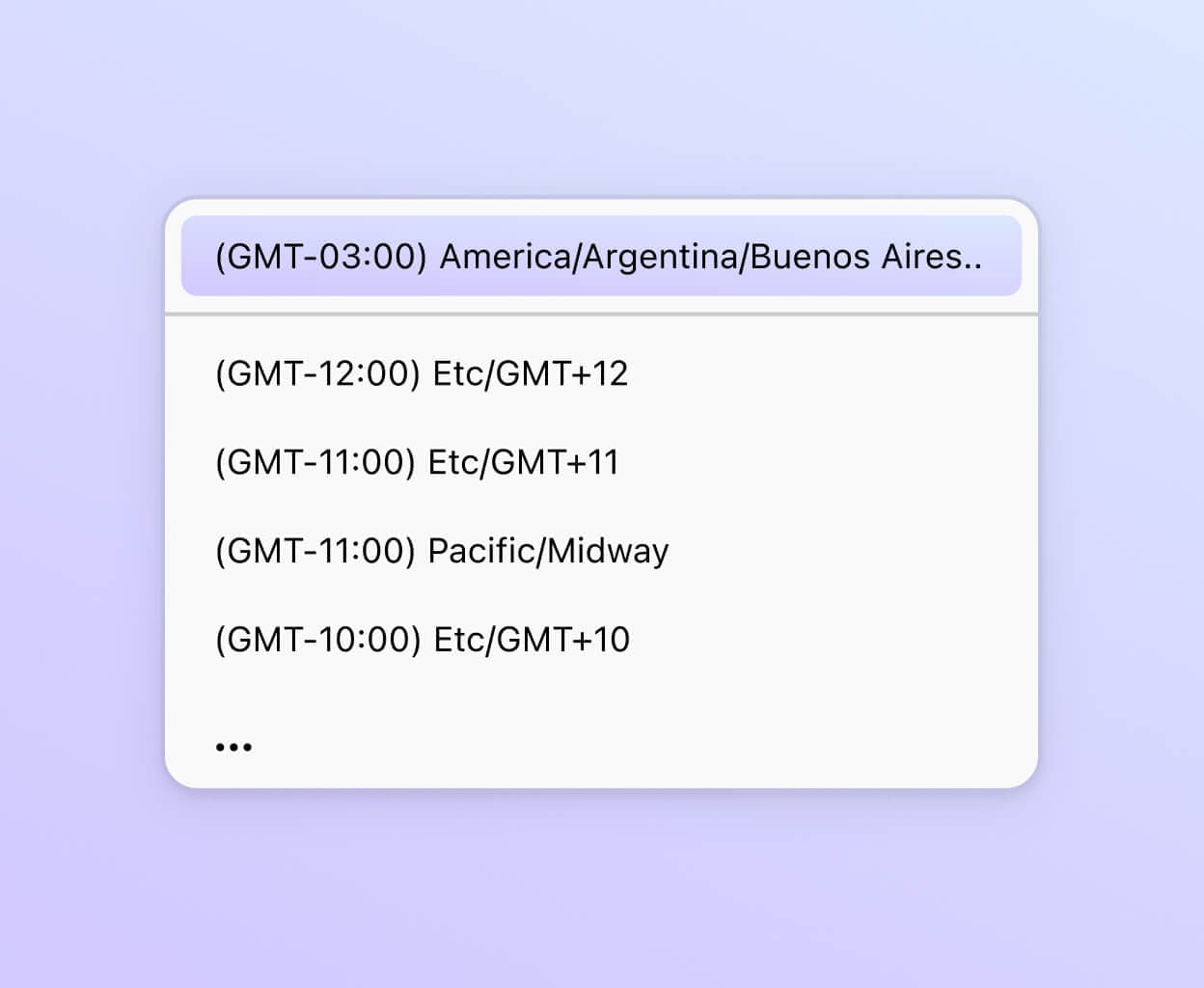
Setting up call routing for small business with Dialpad
Small business call routing is easy to set up with Dialpad
Log into your account or in your web browser on dialpad.com, then navigate to Admin Settings.
From there, go to Departments > Business Hours & Call Handling > Call Routing.
Choose Edit Call Routing. (You can customize this for your business hours, with one set of routing for your open hours and another for your closed hours.)
Here, you'll be able to route phone calls either to your "Operators" (or whoever on your team is responsible for taking calls) or to other options like voicemail, another department, or an automated voice response. That's it!
Need better routing for your contact center or call center?
Get flexible routing options, real-time call analytics, WEM features, and more with Dialpad Ai Contact Center. Book a product tour to see how it can work for you!









